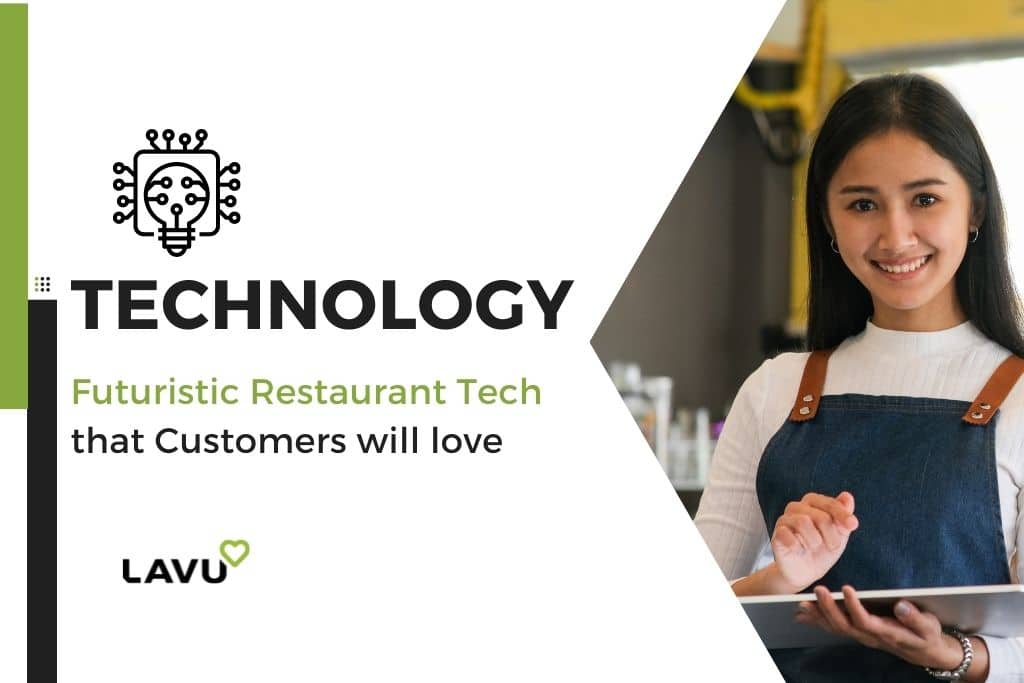
If today’s list is any indication, the future for the restaurant industry is faster service times, higher ticket numbers, and better payment securities. Customers are looking for businesses that understand their fast-paced, busy lifestyles, and the restaurant industry has a lot to gain by integrating new technologies quickly. See below for the futuristic restaurant technologies that customers will love to use.
Pay-at-the-Table Hardware
Despite pay-at-the-table hardware being available for a while now, restaurant owners have been slow to adopt this new-ish technology. It would be a win-win for all parties involved, as guests receive faster service and restaurants can increase table-turnover rates. Other benefits for pay-at-the-table hardware are:
- Stronger payment security.
- Reduced wait times for guests.
- More tips for employees (courtesy of the recommended tipping option the hardware provides).
- Fewer chargebacks.
- Increased profitability.
Types of Restaurants that Should Adopt It: The types of restaurants that should integrate pay-at-the-table hardware are fast casual and casual dining establishments. Because your customers like the informal nature of your operations, they would appreciate the speed that this technology presents. In today’s dining culture, removing a check from the table is more appropriate for fine-dining or upscale restaurants.
Smartphone Tabs
Your bar guests always have their phones out, so why not take advantage of that with Radtab? This software works with your bar POS to allow patrons to view their tabs from their phones. Every time a drink is rung up, the ticket is updated in your system and on the customer’s phone. Guests can close out their tabs when they’re ready and leave a tip. It’s a simple way of keeping the party going without any surprises, while letting your bar staff focus exclusively on customers.
Types of Restaurants that Should Adopt It: Bars or large party venues would benefit the most from Radtab’s smartphone tab technology. Customers can check how much they’re spending throughout the night, and bartenders don’t have to be responsible for dozens of cards on file.
Digital Menus
Are printed menus going to be the new vinyl in 10 years? With any say from millennials and tech companies: yes, with digital menus as the new industry normal. There are several reasons why restaurants are tossing out their paper menus:
- Maintaining a digital menu is simpler than printed menus.
- They create more memorable experiences for guests.
- Less money is spent over time (think: paper, ink, and time spent on designs and updating).
- Animations, gifs, and special designs can be used to upsell.
Types of Restaurants that Should Adopt It: Digital menus are an excellent tool for restaurants that make frequent changes to their menu or that offer add-ons. Digital menus are also a reliable investment for restaurants that attract millennial customers, as they are most comfortable with screen technology and would find their presence modern and impressive—thereby finding your restaurant also modern and impressive.
Facial Recognition Tech
Back in 2017, we talked about facial recognition technology and how some restaurants in Asia are experimenting with it. Privacy was a concern then and continues to be today, yet that hasn’t stopped some US restaurants from using facial recognition technology in their restaurants. The franchised BurgerFi store in Dallas has been using the futuristic technology to remember how customers like their burgers cooked. Malibu Poke, another Dallas restaurant, also uses the technology to be more efficient. “It’s all about speed and getting through the line quickly,” says owner John Alexis.
Types of Restaurants that Should Adopt It: Because facial recognition technology can make ordering food faster, fast food chains or assembly-line style operators would benefit the most from it. Customers are more likely to accept the technology if it’s used as an efficiency optimizer. For sit-down dining on the other hand, discretion and anonymity will continue to outweigh the benefits.
Stand-Alone Kiosks
Now used by major fast food chains like Wendy’s and McDonald’s, stand-alone kiosks are providing restaurants new and improved methods to:
- Upsell food items and promos.
- Earn higher tips for employees.
- Grow overall revenue.
- Shorten long wait lines.
To add to the list, restaurants have reported higher tickets with restaurant kiosk systems. Cinemark movie theater’s new self-service kiosks have “had concession spending per person climb for 32 straight quarters.” According to the Harvard Business Review (HBR), there are a few explanations for the uptick in sales:
- Customers are no longer embarrassed to pronounce a difficult-to-pronounce menu item.
- The fear of being judged for one’s food order is removed.
- People are more susceptible to upselling with a kiosk.
Types of Restaurants that Should Adopt It: Any food service operator that doesn’t offer menus for seated parties can benefit from stand-alone kiosk technology. In fact, if your sit-down restaurant does prepare a significant number of to-go orders, then a kiosk could increase sales.
Lavu Pro Tip: If you do decide to integrate kiosks, don’t forget about the importance of face-to-face contact with customers. The HBR found that while kiosks can stimulate sales, customer satisfaction drops if there isn’t enough interaction with staff. Embrace the qualities of new technology with old-fashioned customer service and you’ll find great success.
Fast, better service is just one way technology can help your restaurant earn more. Propel your business forward with this useful restaurant tech.

